THE HULL
The hull is very similar to our original Lobster Boat design. (If it ain’t broke, don’t fix it!) It still has the classic semi–dory shape, combining a flat stable bottom with a pointed bow that allows for cutting through chop. It has just enough rocker that it can sail well while also planing properly with an outboard motor. The bottom corners of the transom are rounded instead of square, so that it can heel under sail without increasing drag.


THE DECK
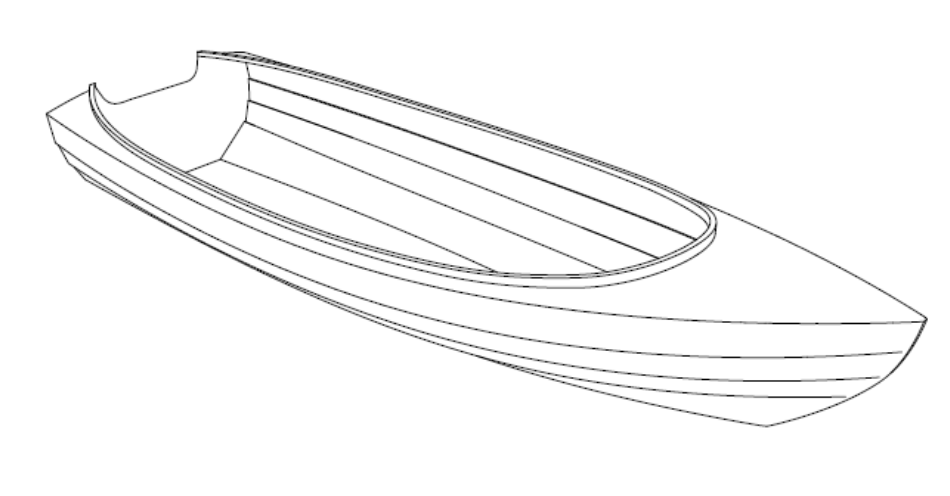
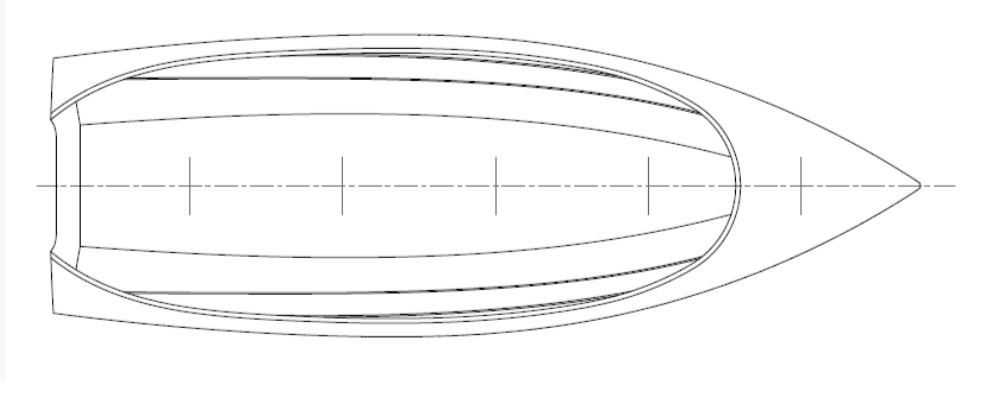
THE FLOATION AND MOTOR RATINGS
- Maximum Weight Capacity (persons, motor, gear) of 935 pounds
- Maximum Persons Capacity of up to 6 people or 750 pounds
- 10 hp motor
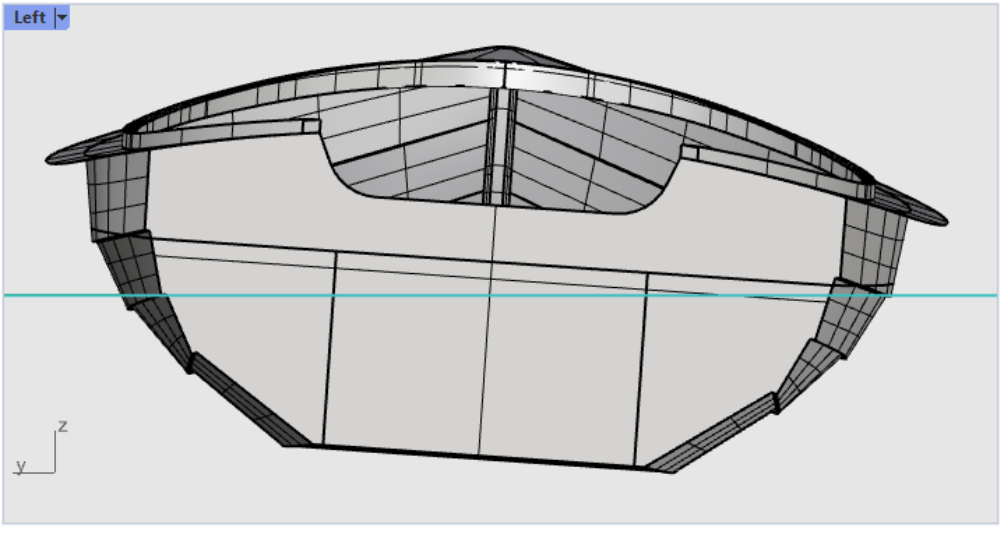
THE INTERIOR
The interior has some changes, but isn’t all that different from its predecessor. The Lobster Boat is designed primarily for motoring to get out to the fishing grounds quickly, with good stability and space so you can drop and pull your pots without a lot of drama. We’ve given the new interior a more open-feeling cockpit, improved floatation layout throughout the seating area to meet the capacity requirements noted above. There are longitudinal seats along both sides, and at the stern. There will also be two thwart seats bridging both sides (positions still TBD on that).
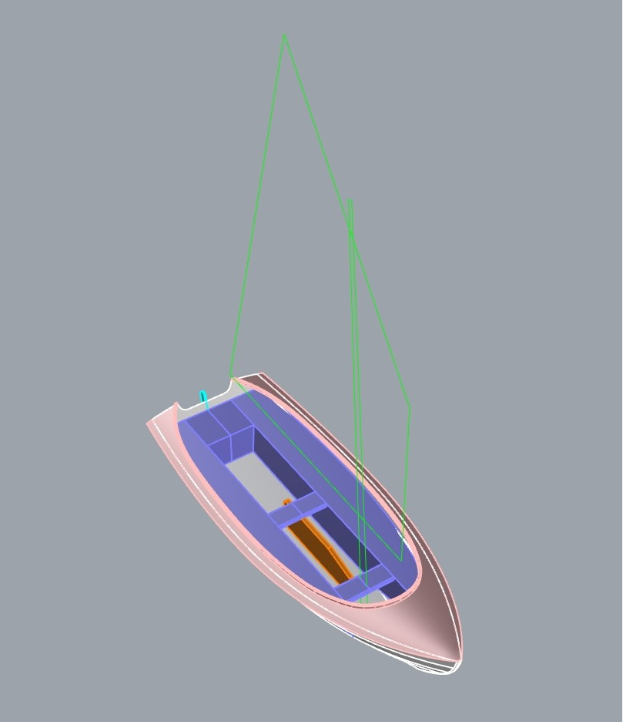
Wait… what ho, is that the outline of a balanced-lug I see before me? Indeed, eagle-eyed reader…
THE RIG
The rig on our drawing board right now is a balanced-lug! We’ve been on the fence about whether to keep the sloop rig from our original design, switch to a balanced lug, or offer both options. Ultimately, we decided to start with a balanced lug for ease of rigging. The balanced lug is just so user-friendly, and easy for new sailors to learn. Since this boat has some crossover appeal into the motorboat market, we figured that keeping the sail rig dead simple to learn and use would make her more interesting to less experienced sailors.
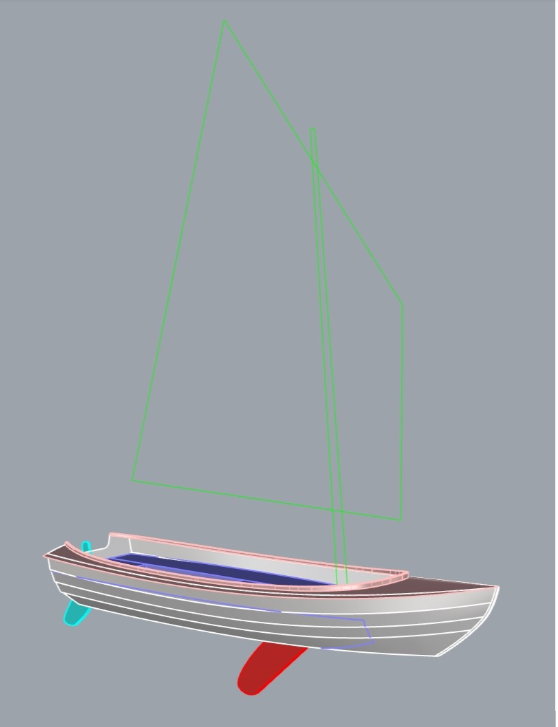
If you’ve been hoping for a sloop rig, take heart… we’d like to work that out as an optional upgrade, though we’re focusing on the lug rig first.
THE ROWING
NEXT STEPS – preordering is coming this spring!
Now that we have the design done, Brandon is working on making our CNC kit so we can build and test our prototype out of wood and make any tweaks to the design before we progress to the fiberglass version. We intend to build and test the wood prototype this spring! This summer we’ll be creating our molds and building hull #1 in fiberglass, with delivery anticipated on the first production orders this fall.
We’ve got a 3D model in the works that will give you an idea of what this boat will look like in real life, so you have an idea of what you’re getting when you place your order. We’ll be opening up a preorder offer for the new lobster boat this spring…. stay tuned as we hope to have that update to you all in the next month or so!
SIGN UP here for our Lobster Boat email list and be first to know when we open up preorders!

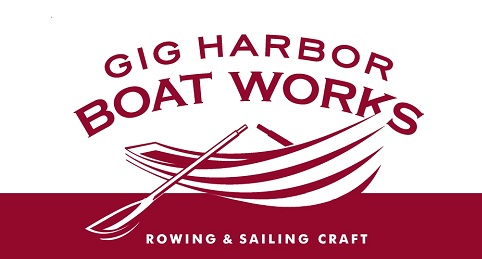
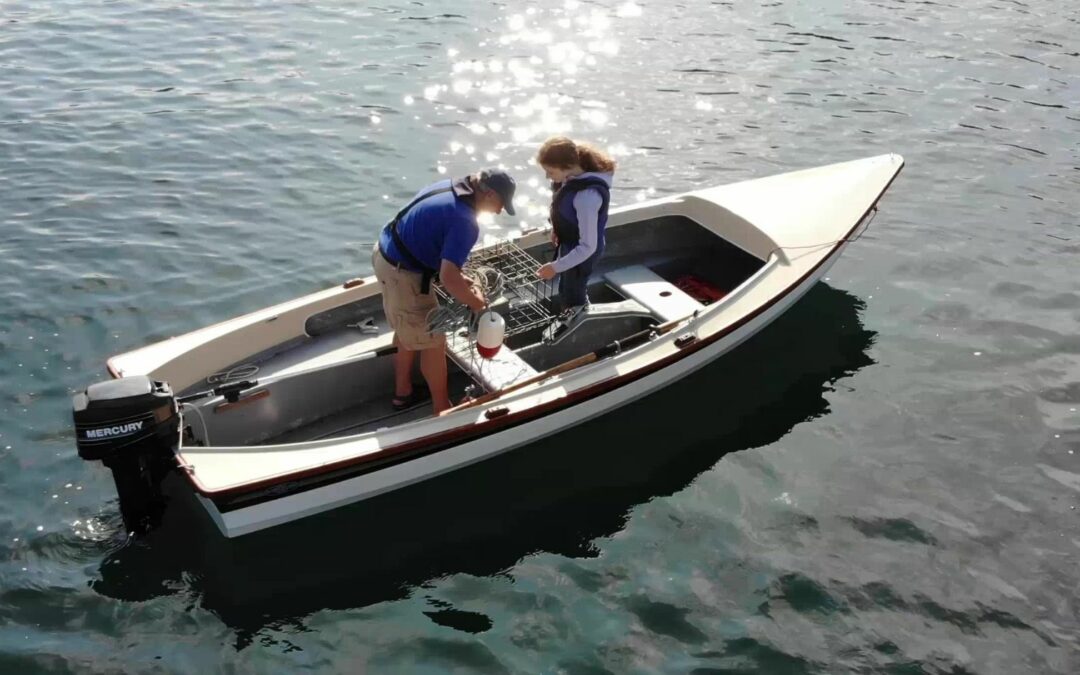
Still 15 feet? Longer options?
I’ve never sailed a lug rigged boat. Honestly, how well do they go to weather compared to a sloop? It could be a deal breaker for me.
Great question. We won’t be able to really compare the Lobster Boat’s performance with a lug rig until we build her, but that’s one reason we’re not eliminating the sloop rig as an option at this juncture. At the level of sailing we’re working at, it doesn’t make a huge difference.
As a point of comparison on the rigs in general, I’ll quote Howard Rice’s take on sailing the Scamp (which uses a similar balanced lug rig to the one you’ll find on our 17′ Salish Voyager, and the redesigned 15′ Lobster Boat):
“Like many boats SCAMP can and will sail 45 degrees to weather in many conditions if she is helmed and trimmed (both sail and angle of heel) properly. I can maneuver her up higher than 45 degrees through helm and trim techniques at certain times (sailing tight into a slip or dock, rounding a point of land, maneuvering in tight channels, etc. She goes to weather acceptably well in my book, certainly not as well as some (sloop or other rigs optimized for upwind performance) rigs but just fine for an under 12 ft boat.”
He added, “There are many variables that determine both speed to weather and as importantly “Velocity Made Good” (VMG). SCAMP likes to be sailed flat so a reef is a good idea even in medium air (depending on your skills between 11 and 15 or so knots for the first reef). If you sail her a bit free (don’t pinch) and keep her flat she will sail very nicely. There are many up wind conditions and depending conditions you can expect a range of speeds. So for a general idea lets say 10-11 knots of wind, small waves, SCAMP can go up wind between 4 and 5 knots. Off wind she is faster. Hope this helps.”
yes, how long will she be?
She’ll be 15′ long, like her predecessor.